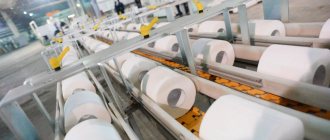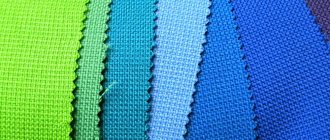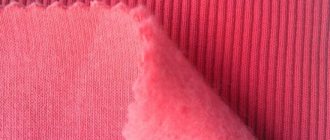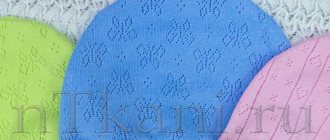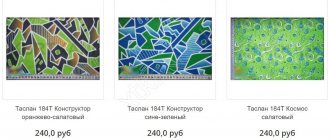Polycotton is a textile material woven from two types of raw materials: cotton and synthetic. Such fabrics are called mixed or mixed. The idea of using natural and chemical fibers simultaneously was implemented in the production of knitwear back in the middle of the last century. In the textile industry, they have learned to use synthetic and cotton fibers and threads in one product in recent decades.
Background of the issue
This is how cotton grows
Cotton plant is the oldest plant used by humans for domestic purposes. India is considered the birthplace of cotton. Although, as often happens, during the same historical period, cotton began to be used in other southern countries, regardless of India. Cotton fabrics have been at the peak of popularity for thousands of years. It turns out that not only silk was transported along the Great Silk Road, but also cotton, cotton fibers, and fabrics.
Today, there are trends towards reducing the use of cotton fibers in the textile industry.
- In the world, by the beginning of the 21st century, the share of cotton used as textile raw materials decreased and amounted to 35%. The volume of use of synthetic, artificial, and other natural polymers has increased. The pursued goal was to reduce the cost of the product while maintaining its quality.
- In our country in the 60s of the last century, cotton was used 8 times more than other natural fibers. By the end of the century, due to government changes, cotton for Russia became a completely imported raw material. In the 17th century, they tried to grow cotton in the Moscow region, but the attempt failed. The need to import cotton fibers from near and far abroad countries has led to an increase in cost. In neighboring countries, the environmental situation has deteriorated, which has affected the quality of raw materials.
The combination of all circumstances became an incentive for the introduction of innovations in textile production technology.
Comparison of polycotton and calico
Calico contains 100% cotton, and polycotton contains a maximum of 65%. But each canvas has its own pros and cons. The first one shrinks, wrinkles, requires mandatory ironing, and at a density of up to 125% it looks like “gauze”. A small amount of the latter smooths out all the shortcomings, so the polycotton material with a smaller proportion of polyester in the composition is quite competitive in relation to calico.
Office dress
If we compare the properties of fabric 65% silk and 35% polyester, then in terms of electrostatic properties it loses to natural cotton fabrics, including polycotton. The reduced ability to absorb water and allow air to pass through pays off with the bright colors of synthetic fabrics. Restaurant tablecloths and curtains made from this fabric look beautiful due to its silky shine.
This will be interesting to you All about Minky plush: what it means and what it consists of
The properties of combined fabric are used in the manufacture of products that require waterproofing - jackets, mattresses, tents.
Home textiles
Composition of polycotton fabrics
The literal translation of the name of the group of fabrics means “a lot of cotton.” This is true in half the cases.
- If the material is 50% or 65% cotton, and the rest is polyester, then this is really a lot.
- When the cotton content is 15% or 35%, the name becomes conditional.
The rest of the raw materials in polycotton are polyesters (polyesters).
Polyester fiber is made by polymerization (chemical cross-linking) of two repeating components:
- terephthalic acid – an aromatic dicarboxylic acid;
- ethylene glycol - organic dihydric alcohol.
The resulting polymer is widely used for the production of textile fabrics (75%), food films, and packaging (13%). High-quality, purified polyester is absolutely inert and safe.
Polycotton composition
The composition of polycotton can be easily determined from the name: “poly” - polyester and “cotton” - cotton. Indeed, it is these two components that the canvas consists of. The only difference is in the percentage of natural and synthetic threads, which range from 15 to 65% cotton, the rest is polyester. Let's take a closer look at what polycotton is.
It is important to remember that the lower the indicator in the left column, the less natural threads there are in polycotton. The optimal ratio is 65/35, in which the presence of synthetic threads does not detract from the natural properties of the material, but only adds the missing qualities. Cotton composition from 15 to 65%, the rest
To find out in more detail what kind of polycotton fabric is, you need to study all the forms of this material and become familiar with its characteristics.
Production methods, polycotton structure
There are two main methods for producing mixed textile materials. Both are used in the production of polycotton.
- In one case, different fibers in a given ratio are included in the composition of one textile thread. When weaving such textile threads, a homogeneous double-sided material is obtained that combines the qualities of the original raw material.
- In the second case, threads made from cotton are intertwined with threads made from polyester fiber. It is possible to weave one homogeneous thread with a second heterogeneous one, which consists of two different fibers. Depending on the type of weaving, you may end up with a double-sided fabric, with predominantly cotton on one side and synthetic material on the other.
The good consumer properties of mixed fabrics during the production process can be improved by additional processing: application of impregnations and coatings.
The structure of the cotton fibers used depends on the degree of maturity and plant variety. Cotton fibers are:
- short-fiber with a length of up to 26 mm;
- medium-fiber with a length of up to 34 mm;
- fine-fiber with a length of up to 50 mm.
The name of the latter apparently implies that if the fiber is thin, then it is necessarily long. Sometimes it is called that - long-fiber.
The structure of mixed fabric - polycotton - depends to a very large extent on the type of cotton fiber used in the production and the type of threads obtained.
Important properties of threads include:
- thickness (linear density);
- twist (degree of twist);
- breaking load;
- breaking elongation;
- uniformity of all previous indicators.
The variety of raw materials used, thread properties, and types of weaves explains the wide range of products. The average consumer is sometimes perplexed by the many differences in fabrics offered under the same name.
Characteristics and composition
Polycotton, what kind of fabric is this, the question arises with each new material appearing on the counter.
What kind of material
A combination of cotton and synthetic raw materials is used in the production of new textile fabric. The idea of mixing different fibers came in the middle of the 20th century. The combination of different properties of fabrics in one copy prompted experiments in the textile industry.
The resulting chemical production result was used to produce a new type of textile fiber. The required components of the polycotton composition include natural cotton and synthetic polyester. How safe is it?
Color range of mixed fabrics
Important! The percentage change in components affects the cost and quality of the material. With an increased content of synthetics, the quality characteristics of the material deteriorate significantly. When the cotton content of 50-65% in the fabric is considered a good indicator, and at 15% the presence is considered more conditional than appropriate.
Variety
The cotton fibers used in production are short-fiber up to 26 mm, medium-fiber 34 mm and fine-fiber up to 50 mm. The structure of the raw materials used affects the quality and cost of the finished product.
How to mix the components of the future canvas. The polyester fiber content of polycotton is accomplished by the polymerization of terephthalic acid and ethylene glycol. The polymer compound is used in the production of food films, packaging, and certain types of textile fabrics. Purified polyester is inert and non-hazardous. Polycotton, its composition, what kind of new type of material it is.
With a cotton content of 50% or more, the fabric has:
- good appearance and pleasant feel;
- hygroscopicity;
- no problems with static electricity;
- slight shrinkage after washing;
- no deformation after multiple washes;
- durability of the canvas with a small thickness;
- requires almost no ironing.
You might be interested in this Description of tartan: what is special about the fabric
Quality and durability
The disadvantages of synthetics increase with its percentage in the fabric. Reduced hygroscopicity and accumulation of static. The fabric does not breathe and retains moisture.
They use the main 4 types of material with a cotton content of 65, 50, 35 and 15%, and polyester, according to GOST - 35, 50, 65 and 15%. The combination of completely different components gave birth to a fabric with the characteristics of both fibers. The first has porosity, environmentally friendly and hypoallergenic qualities, and the second gives the fabric strength, wrinkle resistance, uniformity and lack of shrinkage.
Polycotton
Types of weaves used in the production of polycottons
When making polycotton, simple (main) types of weaves are used.
- Linen. Plain weave, in which each warp thread is intertwined with each weft thread through a single thread, results in a reversible fabric with smooth surfaces. This is how they do chintz, calico, calico, cambric.
- Twill. In a twill weave, the weft thread covers 2 or 3 warp threads, diving under the next warp thread. Weaving is done with a shift in one thread. The result is a reversible fabric with a smooth, slightly shiny face, on which diagonal ribs are barely visible. Such fabrics are softer than linen and do not wrinkle as easily, but may have less strength.
- Satin. With satin weaving, at least 4 warp threads under the next 1 warp thread are covered with a weft thread with a shift of at least 2. The result is a double-sided fabric, smooth and shiny on the front side. The resulting soft material has a slightly slippery surface on one side. It may crumble at the edges.
The type of weave determines the properties and purposes of the fabrics.
Reviews
Oksana: Polycotton bed linen is my faithful companion in life. For five years now, two such sets have served me faithfully. No pilling, no scuffs, no faded color, everything is like new!
Alena: For the summer I sew bright polycotton dresses for myself and my daughters. They don't wrinkle, they don't get hot, and most importantly, they're practically weightless.
Galina: I like to sew beautiful and high-quality things in a short time. Polycotton fabric is great for this. It does not fray when cut (unless it is twill weaving), does not slip, and looks very dignified.
Characteristics, directions of use
Polycotton home textiles
For the production of bed linen, home textiles, and ordinary clothing, mainly linen materials are used: calico, satin, and sometimes very dense percale, which is similar to cambric. Most of these mixed fabrics have a density from 80 g/m2 to 146 g/m2.
An important characteristic of fabrics is its design, which refers to the number of threads per certain length. In Russia, they choose a segment 10 cm long. Abroad, they use international standards and choose a segment of 1 inch, i.e. 2.54 cm.
So, for example, from the marking T 131; 68*63 we can conclude:
- the sum of warp and weft threads per 1 inch is 131;
- of these along – 68 threads;
- across - 63 threads.
It is important for the consumer to know that the greater the number of threads in a piece, the higher the quality and, accordingly, the price of the fabric. In our market, material with a T of more than 200 is practically never found (with the exception of rare luxury products). The level of claims and financial capabilities of the mass consumer has not yet risen to such requirements.
Polycottons
An important characteristic is the weight of the fabrics, which means the weight of a piece measuring 1 m2 (designation in English - GSM). For bedding fabrics, the usual weight is from 100 g to 160 g. Products with a large weight are used for sewing bedspreads, covers, and curtains.
Recently, imported polycotton made using the satin-jacquard weave technique, intended for furniture upholstery, has appeared on the market. The fabric belongs to the high strength category and has a density of 215 g/m2. Its wear resistance is 10,000 cycles.
Special and camouflage clothing is made from special mixed fabrics with plain and twill weave, containing cotton and polyester raw materials. The density of popular types of such fabric is:
- 150 g/m2,
- 190 g/m2,
- 210 g/m2.
These textile materials have increased strength and wear resistance. Thanks to the additional application of a water-repellent layer, they do not absorb dust or moisture. Taking into account the purpose of the material, a realistic design (ForestLine) is applied to its surface using special technological techniques, allowing the wearer to merge with the surrounding nature.
Application
Before deciding what products polycotton is used for sewing, let’s define the main types of this material.
- plain or plain-dyed: bed linen, mattress covers, napkins;
- bleached: sleeping sets for hotels, sanatoriums, hospitals;
- multi-colored or with printed patterns: bedding, home textiles;
- quilted: blankets and mattresses filled with wool or synthetic materials.
Expert opinion
Alyona
Fabric expert and technologist Alena Khlebnikova is ready to answer your questions.
Write to us
The more polyester a fabric contains, the less its hygroscopicity and aeration capacity. Therefore, the use of textiles with more than 50% synthetics is not recommended for children's bedding.
Polycotton with a high polyester content is used in the manufacture of curtains, tablecloths, napkins, kitchen aprons and other home textiles. These products are distinguished by their resistance to dirt and high wear resistance.
The fabrics, the main part of which is cotton, are used to sew robes, blouses, dresses and summer men's shirts. Thanks to good air conductivity, they do not float on the skin and create a feeling of comfort.
You can finally find out what kind of polycotton fabric is by studying all its positive and negative sides and comparing it with other materials.
Advantages and disadvantages
All polycottons differ from natural cotton fabrics in the following main advantages:
- high resistance to wear;
- reduced creasing;
- minimal or completely absent deformation during long-term use;
- minimal or no shrinkage;
- hygienic and environmental safety;
- ease of care;
- lower cost than all-cotton fabrics.
Fabrics with a polyester content of more than 35% may have noticeable shortcomings. Among them are the following:
- the ability to produce static electricity appears;
- the ability to pass air decreases;
- when used, pili appear (this is the correct name for small pellets).
Checkered polycotton: 50% cotton, 50% polyester
Some consolation for consumers is the lower cost of materials with a significant content of synthetic fibers.
Unfortunately, there are fakes on sale. The labeling indicates a low content of synthetics or its complete absence, and when used, the discrepancy with the declared quality becomes clear.
It is easy to check the presence and approximate amount of polyester fibers in the material. If, when the threads are set on fire, they burn, forming a tiny amount of melted resin, then there are few synthetic fibers. If the resin drop is large, then the fabric consists mainly of synthetics. The method is very approximate, but it will help to identify large differences between the declared composition and the actual composition.
Flaws
Despite many advantages, polycotton has a number of disadvantages:
- non-hygroscopic;
- accumulates static electricity and the higher the percentage of polyester, the more it accumulates;
- high levels of hardness, which may not appeal to every person in bedding.
However, all these disadvantages are offset by the advantages and low price.
When choosing polycotton bed linen, people with allergic reactions need to be careful.
If the polyester content is high, pellets will appear on the polycotton fabric over time.
Caring for polycotton products
Polycotton does not require special care products. You need to pay attention to some features:
- washing temperature should not exceed 40°C for fabrics with a predominant content of polyesters, 70°C for fabrics with a predominance of cotton;
- The ironing temperature should not exceed 170°C (products with a high content of polyester fibers may not require ironing at all);
- Do not use bleach;
- Should be washed separately from cotton and colored fabrics.
High-quality polycotton is a comfortable, beautiful, budget textile material. The market offers a wide range of fabrics from domestic and foreign manufacturers. You can study the products offered on company portals, evaluate them in the light of acquired knowledge and make the right choice.
Advantages of blending over pure cotton
There is no doubt that completely natural fabric has its advantages, but if we compare bed linen made from polycotton and cotton, the first has a number of advantages:
| characteristic | polycotton | 100% cotton |
| wear resistance | will last several years | short service life |
| ironing | does not require | It wrinkles a lot, it won’t be possible to iron it when it’s dry without a steamer. |
| shrinkage | does not give | small percentage of shrinkage |
| color | remains for a long time, does not fade, even after many washes | fades over time |
| price | low | average |
Adding synthetic fibers to fabric makes it possible to get rid of all the negative properties of natural material.
Comparative characteristics of cotton varieties: memory and stretch
The educational story tells about the benefits of cotton and compares in detail two types of material: stretch cotton and memory cotton. The video contains useful tips and helps you choose the most suitable products for sewing.
See similar articles
- Staple - lightweight breathable fabric for summer clothing
- Velor - soft fabric with pile, for clothing and interior
- Milano - dense soft knitted fabric
- Satin is a fabric similar to silk with the properties of cotton.
- Chintz is a lightweight cotton fabric for summer clothes.
- Jeans - fashionable thick cotton fabric
If you liked the article, share it with your friends!

